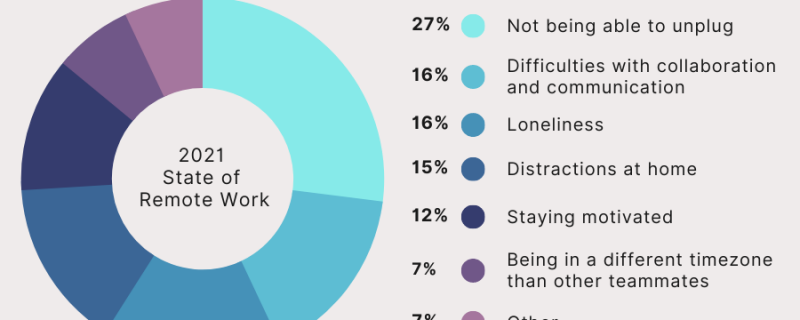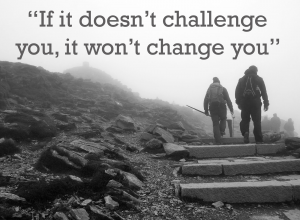Recognizing A Strong Leader
 If someone asked you, “what are the critical components of strong leadership”, what answer comes to mind? Maybe good listening skills or excellent communication would top the list. Or perhaps the ability to delegate and not micromanage. While all of those answers are spot-on, you may be surprised by one crucial component that’s often overlooked: self-reflection.
If someone asked you, “what are the critical components of strong leadership”, what answer comes to mind? Maybe good listening skills or excellent communication would top the list. Or perhaps the ability to delegate and not micromanage. While all of those answers are spot-on, you may be surprised by one crucial component that’s often overlooked: self-reflection.
If you’re in a leadership role, when was the last time you made an effort to focus on self-reflection? Or have you ever really done it or even figured out what it means? Self-reflection is taking some time to think about your thoughts, behavior, motivation and actions. The concept seems simple, but it can be surprisingly difficult to do. We’re always moving on to the next project, meeting or crisis without pausing to reflect on what happened earlier that day or that week. On the flipside, self-reflection is NOT about beating yourself up and getting stuck in the past. We can’t turn back time or erase a negative outcome, but we can learn from those experiences and change our behavior or leadership tactics moving forward.
So, why is self-reflection a key practice for leaders? It’s all about the 3 A’s: Awareness, Adaptability and Action. Let’s take a closer look:
- Awareness: Self-reflection helps leaders become aware of their strengths and weaknesses. That kind of awareness helps them better understand how they lead, teaches them to capitalize on their strengths and work on improving weaknesses.
- Adaptability: The practice of self-reflection enables leaders to gain insights from past projects, interactions and team dynamics. They’re better able to adapt, grow and respond to changes, conflicts and whatever else is thrown at them.
- Action: By practicing self-reflection, leaders learn to look at situations from a neutral perspective and set their own egos aside. This helps them see the big picture and take action where needed.
A consistent self-reflection practice pays off in so many ways for leaders and helps them:
- Set priorities and make better decisions
- Learn to use feedback for growth rather than taking it personally
- Maintain better relationships
- Communicate effectively by understanding how they come across to others
- Create a more honest and productive work environment
Taking the time to reflect has big benefits for both leaders and organizations. Yet many don’t recognize the value or know how to put it into action. That’s where working with a coach, like Leah M Joppy and Associates, can help leaders build a regular, ongoing self-reflection process. Leaders will learn how to ask effective types of reflection questions, receive personalized feedback and help set and achieve their goals. Ready to learn more? Call us at 301-670-0051 or email us at leah@lmja.com to learn more.
The Bests Ways To Practice Self-Reflection
 For such a useful practice, the self-reflection process is not something we know how to do intuitively. It’s not something we learn about in school and it isn’t part of most job training. Our work environments tend to focus on what to do next or how to do more. We’re shaped by “always moving forward” work cultures and we believe there’s no time to pause and reflect. Most of us don’t learn about the power of self-reflection until someone else, often a coach or mentor, guides us through the process.
For such a useful practice, the self-reflection process is not something we know how to do intuitively. It’s not something we learn about in school and it isn’t part of most job training. Our work environments tend to focus on what to do next or how to do more. We’re shaped by “always moving forward” work cultures and we believe there’s no time to pause and reflect. Most of us don’t learn about the power of self-reflection until someone else, often a coach or mentor, guides us through the process.
Self-reflection enables leaders to identify their strengths, weaknesses and areas for improvement. But how do you begin a self-reflection practice if it’s not something that you typically take the time to do? Here are a few suggestions:
Reflect regularly
Schedule 10 to 20 minutes a week for self-reflection. This should be blocked out in your calendar, so it’s a set time for you to quietly think and self-reflection becomes a regular habit. A quiet and calm place without distractions is ideal. For some, leaving the office environment helps clear the mind. Others may choose to arrive at the office 30 minutes earlier when it’s quiet, to reflect on the day or week ahead.
Develop a structure for reflection
Self-reflection can be overwhelming to begin with and particularly without a set focus. You may want to start with a single question or topic, such as the following areas:
- Week in review: What went well? What did you learn? What could you do differently?
- Highlights: What did you do well as a leader this day and/or week?
- Leadership: What type of leader do you want to be? Which leaders do you look up to? How does your team view you as a leader?
- Values: What are your core values? Do they align with your organization’s values?
- Team: What type of leader does your team need? Are there ways you could better meet their needs?
- Goals: What are the current goals of your organization? What needs to be done and are you on track? What do you need to do as a leader to meet these goals?
Write down your thoughts
Writing down thoughts and ideas down during self-reflection frees up space in your mind and gives you the opportunity to organize your thoughts. Plus, having a record of your self-reflective thoughts means that you can check back regularly and see your progress.
Encourage your team members to practice self-reflection
While self-reflection is important for leaders, your team can also find a lot of value in it. Encourage your team to regularly reflect on their own performance, as well as yours and make them feel comfortable sharing their insights with you.
Self-reflection is a humbling, but powerful technique that helps leaders (and team members) improve their performance. But it can be a tough process that makes you take an honest look at yourself: your strengths, your weaknesses, areas for improvement and how you should work to grow and develop. Leah M Joppy and Associates is ready to help you make self-reflection an important component of your leadership process. We can help you set goals and provide support and accountability. Contact us at 301-670-0051 or email us at leah@lmja.com to learn more.
Why Some Managers Are Resistant To Work Schedule Flexibility

For many organizations, work schedule flexibility is a new part of their compensation package. It’s a powerful tool in terms of employee engagement, retention and recruiting. Remote and flexible schedules have shown to not only provide employees with higher job satisfaction, but better health, less absenteeism, increased work-life balance and less stress. This is all well and good for workers, but what do managers really think about remote work? While many understand the appeal and benefits, it’s still difficult to embrace change and work through the challenges of managing a remote and/or hybrid team.
Here’s a look at 7 reasons why managers may be resistant to remote work:
- Lack of accountability and supervision: Sure, some team members work well (and in some cases better) working remotely. Then there are those that struggle with time management, distractions and other challenges. Managers may feel that it’s more challenging to supervise employees and keep them accountable when they’re not physically present in the office.
- Loss of collaboration: Face-to-face interaction is often believed to foster a more cohesive work environment. Some managers worry that remote work can make it harder for team members to truly feel like a team. This is of particular concern for new team members and younger workers who are just starting out in their career.
- Lack of company culture: Strong in-office culture can be a key component for an organization’s retention and recruitment. Managers may worry that remote work could be a hinderance towards building this culture.
- Increase in security concerns: There may be concerns about the security of data when employees are working outside the office.
- Decrease in productivity: Some managers may feel that team members are more productive in a controlled office environment. Working from home can potentially have more distractions and chances to break from a traditional work schedule.
- Concerns about equity: In some settings, not all roles can be performed remotely or on a hybrid schedule. Allowing some employees to work from home might create perceived (or actual) inequities among team members.
- Holding onto a traditional mindset: Some managers may still have a traditional view of work that involves all team members being present at a common workplace. Change is hard and personal experiences and beliefs take time to overcome, particularly when it comes to management practices.
As we discussed last month, an annual government-wide survey conducted by the Office of Personnel Management found that more than two-thirds of federal employees are still teleworking at least occasionally. Remote and hybrid work isn’t going anywhere, but neither are the management challenges if your organization doesn’t face them head on. Leah M Joppy and Associates can help you figure out your primary challenges and work with you and your team to make remote/hybrid working a more efficient, productive and collaborative experience!
Call us at 301-670-0051 or email us at leah@lmja.com to learn more.
Why Some Employees Find Remote Work To Be A Challenge

When we think of remote work, many of us think of meetings in our sweatpants, the ability to schedule appointments when we want and not having to sit in traffic for hours. For many, a remote or hybrid schedule is like a dream come true. We’ve looked at the variety of benefits in past articles, among them: work/life balance, increase in productivity, no commute, increased flexibility and autonomy and so much more. And we’ve looked at why offering a remote and/or hybrid schedule is an incredibly effective recruiting and retention tool. But even with all the positives, remote work can present a whole new set of challenges for some employees. Let’s take a look at some of the top 5 remote work complaints:
Con #1: Social isolation
This is probably the number one complaint that employees have about remote work, particularly new workers and young workers who are new in their career. It may be challenging to build strong relationships with colleagues without face-to-face communication, resulting in a sense of disconnection from the team. Social events like happy hours that were once spur of the moment and easy to plan, now take more effort and can end up on the backburner.
Con #2: Work-life boundaries are blurred
While some feel one of the biggest benefits of remote work is work/life balance, others have difficulty unplugging from the office and feeling like they’re always “on call”. It can be difficult to disconnect from work and take breaks when workspace is also a private space. This lack of separation can negatively impact mental well-being if not managed effectively and can lead to burnout.
Con #3: Communication and collaboration are limited
Zoom meetings are all well and good, but some aspects of face-to-face interaction can’t be done remotely. Remote work can make it challenging to build trust through in-person interactions. Some team members may also feel like their access to mentorship, networking and senior leadership opportunities are more limited.
Con #4: Risk of miscommunication
Remote work often involves written communication, which can sometimes lead to misunderstandings or misinterpretations. It may be challenging for remote workers to resolve conflicts effectively without the benefit of immediate in-person conversations.
Con #5: Lack of focus and distractions
While the typical distractions of the workplace may be eliminated, remote work introduces a new set of distractions at home. It’s easy to be distracted from work tasks by household chores, family members or other personal issues. Some workers may not have the space to exclusively dedicate to a home workplace and have to work in busier areas.
Each of us has a unique personality and work style. For every person who enjoys the solitude of working remotely and the freedom that it provides, there’s another who thrives on human interaction or craves the routine and structure of going into the office. That’s why management plays such an important role in implementing a strategic remote/hybrid work strategy and communicating it effectively with team members. Leah M Joppy and Associates is ready to help you reduce the cons of remote work and ensure that team members feel supported and engaged.
Contact us at 301-670-0051 or email us at leah@lmja.com to learn more and get started.
Listening To The Workforce: How To Make Remote Work Successful

There are so many reasons to love remote and hybrid work. For some, it’s rolling out of bed and starting the work day without the hassle of a long, stressful commute. For others, it’s the flexibility of picking up their kids from school or throwing in a load of laundry during lunchtime. Whatever the appeal, remote and hybrid work models are here to stay. Organization must embrace it if they want to remain competitive and recruit new team members. And the numbers back this up:
- According to job site ZipRecuiter, jobs specified as “remote” receive 300% more applications than jobs that are not.
- Organizations that don’t offer any kind of flexible-work options could be losing out on up to 70% of job seekers, according to HR consulting firm Thrive HR.
- Nearly half (45 percent) of government employees will consider looking for a new job if their agency reduces remote and hybrid work flexibility, according to Eagle Hill Consulting research. These findings come on the heels of new federal government guidance that calls for a substantial increase in in-person work, along with unprecedented challenges filling government jobs.
Offering remote/hybrid positions is one thing, but execution is quite another. Once you have new team members in the door, it’s essential that managers know how to lead remote and hybrid workers. No one wants to feel like they’re out of the loop and continuous frustration with communication, technology and overall job satisfaction can lead to turnover. That’s why strong, well-trained leaders are key to the entire process.
When it comes to managing a remote/hybrid team, let’s start with a few of the basics. We’ve outlined a few “dos and don’ts” below. Maybe you’re already using most of them or perhaps they’re a good reminder of where you need to improve:
- Do set immediate and clear expectations. And make sure they’re communicated clearly to everyone.
- Do schedule regular team meetings and make them a priority (no regular cancellations!).
- Do provide necessary resources. Leaders must ensure team members have the technology and other tools they need to succeed in a remote and/or hybrid environment.
- Do engage directly with employees as often as possible. Have an open-door policy and set aside time for one-on-one conversations
- Don’t just have a communication strategy in place, document it and share it. Everyone needs to be on the same page.
- Don’t just encourage feedback, make it a priority. Really take the time to listen to team members.
- Don’t micromanage and make employees feel like they’re not trusted.
Remote and hybrid work schedules only continue to grow in popularity and can be a major recruiting tool when trying to attract new team members. But implementation needs to be done correctly in order to retain workers. Leah M Joppy and Associates can help you figure out your primary challenges and work with you and your team to make remote/hybrid working a more efficient, productive and fun experience! Call us at 301-670-0051 or email us at leah@lmja.com to learn more.
Is There A Future In Remote Work?

Looking ahead, the future of remote work seems to only be increasing and flourishing. According to Upwork, by 2025, an estimated 32.6 million Americans will be working remotely, which is about 22% of the workforce. This projection suggests a continuous, yet gradual, shift towards remote work arrangement
For many organizations, flexibility is a new part of their compensation package and is a powerful tool in terms of employee engagement, retention and recruiting. Remote and flexible schedules not only provide employees with job satisfaction, but better health, increased work-life balance and less stress.
How does the federal government stack up in terms of remote and hybrid work? According to an annual government-wide survey conducted by the Office of Personnel Management,
more than two-thirds of federal employees are still teleworking at least occasionally. About one-third of the over 625,000 people surveyed said they do not telework at all, due to technological limitations, in-office requirements or personal choice. The remainder, about 68%, telework at least occasionally and most people said they telework three to four days per week.
Even as calls for in-person work have pushed leaders to reconsider remote work policies, they seem reluctant to do so. Remote and hybrid work benefits employers through higher productivity levels, decreased turnover and reduced absenteeism. And as we saw in our previous article, remote and hybrid positions equal more job applicants. Here are a few other ways that it benefits government agencies:
- Ease with recruiting: Public sector recruitment isn’t always easy. Sometimes salaries are less competitive than the private sector, causing many potential hires to consider working for businesses instead. In offering a fully-remote or hybrid work structure, government agencies can increase the odds of finding an ideal candidate.
- Casting a wider hiring net: With work from anywhere a reality, organizations can hire candidates anywhere in the world who will have the skills and qualifications needed, even if they don’t live there. The best may not live within driving distance of the office, but that shouldn’t be a barrier to employment.
- Increasing diversity in the workplace: Studies have shown that groups, including women, people of color and those with disabilities, view remote work positively. Allowing staff to work from anywhere instantly increases the diversity of your candidate pool and removes obstacles to employment such as lack of transportation.
Recruitment and retention in today’s competitive hiring landscape can be a challenge. A strong remote and hybrid workplace can be just the tool your organization needs to attract a larger pool of qualified candidates. Leah M Joppy and Associates can help you create an effective recruitment strategy that outlines your remote workplace model and why potential new hires should work for you! Contact us at 301-670-0051 or email us at leah@lmja.com to learn more and get started.
Overworked? Burned Out?
 Last month, the website FinanceBuzz released a study of the most overworked cities in the U.S. In the study, researchers looked at metrics such as:
Last month, the website FinanceBuzz released a study of the most overworked cities in the U.S. In the study, researchers looked at metrics such as:
- average number of hours worked per week,
- average commute time and
- percentage of workers who work 50+ weeks per year.
And the winner of the most overworked city is: Washington, D.C. If you’d like to take a closer look at the study and the methodology behind it, here’s a link.
We probably don’t need a study to tell us that the Washington region suffers from a severe case of “overwork.” So many of us feel like we’re doing the work of two or three people and juggling it all can seem like an impossible task. But very few people can keep going at a frantic pace and not experience some symptoms of overwork. A few of the most common symptoms are outlined below:
- Increased stress levels and physical symptoms: People may notice fatigue, headaches or gastrointestinal issues.
- Difficulty sleeping: Sleep behaviors may be disturbed, reduced or increased.
- Decreased productivity: When workloads increase, employees may struggle to keep up, resulting in missed deadlines and making more mistakes.
- Procrastination: Some employees may resort to avoidance and procrastination as a way to deal with overwhelm.
- Increased absenteeism: Increased workloads can cause employees to take more sick leave to deal with stress.
- Decreased job satisfaction: When workers feel overwhelmed and overworked, they may lose motivation and become disillusioned with their jobs. This can often lead to higher rates of turnover, particularly in a competitive job market.
Although they’re similar and often used interchangeably, overwork and burnout are not the same. Overwork refers to the act of working too hard or too much. The term “burnout” was first used in 1974 by German-American psychologist Herbert Freudenberger, who defined it as “the physical or mental collapse caused by overwork or stress.” The key is to identify any symptoms of overwork you may be experiencing (the earlier, the better!), so you can prevent burnout.
Prolonged periods of overwork can begin to take a toll on our mental and physical health, as well as personal relationships. When we overwork and fail to prioritize our own needs and self-care, we don’t give our brain or body what it needs to recuperate. In our next article, we’ll take a look at a few ways to handle increasing workloads. If you notice that your workload is starting to negatively impact your life, working with a coach, like Leah M Joppy and Associates, can be incredibly beneficial. We can help you achieve the balance you’ve been striving for, both professionally and personally, before your day-to-day stressors lead to burnout. Contact us at 301-670-0051 or email us at leah@lmja.com to learn more.
Handling Increasing Workloads
 Steadily increasing workloads may seem like a harsh reality in today’s workplace. Technology ensures that we’re available 24/7. Working from home can make it hard to unplug and create a work/home balance. Falling into the routine of overwork is easy, but getting yourself out of it can feel like an uphill task. However, it’s not impossible and your mental and physical health may depend on it.
Steadily increasing workloads may seem like a harsh reality in today’s workplace. Technology ensures that we’re available 24/7. Working from home can make it hard to unplug and create a work/home balance. Falling into the routine of overwork is easy, but getting yourself out of it can feel like an uphill task. However, it’s not impossible and your mental and physical health may depend on it.
No one is equipped to go at lightning speed without suffering some mental and/or physical repercussions, whether it’s right now or down the road. We outlined a few symptoms of overwork in our last article. Perhaps you’re dealing with one or more, but feel helpless and wonder if there’s anything you can do about it. Here are 6 suggestions to keep in mind:
- Minimize distractions and identify time-wasters: Suggestions include checking e-mail only a few times a day, staying off social media, using earphones if you work in a loud environment and setting clear boundaries if you work from home with family members in the house.
- Make lists and establish priorities: Write down everything you need to accomplish in a given day and then assign each task a priority. Project managers often use the 4Ds of time management: Do, Delegate, Delay and Drop. Checking off tasks as you complete them can also give a sense of accomplishment. It’s a small, but powerful step!
- Delegate where you can: So many us get in the mindset of, “Oh, it’ll be quicker and easier if I just do it myself.” This is particularly true of new managers. However, if you’re in a position to delegate tasks, do it! There is a limit to what one person can do.
- Sit down and talk with your manager: If you feel comfortable, enlightening your manager about your situation can help you both come up with strategies. But don’t just walk into their office without a plan. Ask yourself if your current workload is acceptable for your role and job description. Come in with your list of priorities to share. And propose a solution you can both discuss.
- Pursue hobbies outside of work: A hobby not only brings fulfillment, but also makes your brain think in different way and takes your mind off your job. If you work remotely, try to pursue a hobby that gets you out of the house.
- Prioritize wellness into your routine: We’re talking exercise, breathing techniques, meditation, anything that helps calm and recharge you.
And remember, you don’t have to go through this alone. Working with a coach, like Leah M Joppy and Associates, can help you chart a clearer path forward. We’ll discuss your unique situation, strategies for dealing with your increasing workload and help you establish possible solutions and clear boundaries. The key is to get ahead of your workload situation before it leads to burnout.
Ready to learn more? Call us at 301-670-0051 or email us at leah@lmja.com.
The Power of Mental Strength
 Have you ever thought about what makes people excel in a particular area, whether it’s a successful career, playing a musical instrument or running a marathon with an amazing time? Most of us would say it’s a person’s intelligence or natural talent that enables them to achieve such incredible results. However, there may be one important factor that you’re not taking into consideration: mental strength. Mental strength is the capacity of a person to deal effectively with stressors, pressures and challenges and perform to the best of their ability, regardless of their circumstances. Call it grit, resiliency or toughness, it’s the key reason why some people are able to overcome obstacles, while others crumble more easily with the daily challenges and frustrations of life.
Have you ever thought about what makes people excel in a particular area, whether it’s a successful career, playing a musical instrument or running a marathon with an amazing time? Most of us would say it’s a person’s intelligence or natural talent that enables them to achieve such incredible results. However, there may be one important factor that you’re not taking into consideration: mental strength. Mental strength is the capacity of a person to deal effectively with stressors, pressures and challenges and perform to the best of their ability, regardless of their circumstances. Call it grit, resiliency or toughness, it’s the key reason why some people are able to overcome obstacles, while others crumble more easily with the daily challenges and frustrations of life.
You’ve probably seen evidence of this in your own life. Do you remember someone who was an incredible musician, but squandered their talent? How about your high school teammate who consistently worked the hardest and squeezed the most out of their potential? Maybe you were set on accomplishing a goal and were willing to put in the work, no matter how long it took.
So, what does a mentally strong person look like and what makes them tick? In his book “Developing Mental Training,” psychologist Peter Clough, describes four important traits of mental toughness, which he calls the four C’s:
- Control: Control means having a sense of self-worth and describes the extent to which a person feels in control of their life and their circumstances. Mentally strong people also understand what they can control and what they can’t. They can work through emotionally charged situations without seemingly being reactive or derailed. This calm approach often has a positive effect on those around them.
- Commitment: Commitment is all about goal setting and ‘stickability’. It describes the extent to which someone is prepared to set goals and targets and then do what they need to do to achieve them.
- Challenge: Challenge is something that many people are afraid of or try to avoid at all costs. Yet a mentally tough person welcomes a challenge. Whether the outcome is good or bad, challenges often teach us a lesson. Mentally tough people thrive on challenges and see them as an opportunity to learn and grow.
- Confidence: Confidence describes the self-belief a person has in their own abilities and the ability they have to deal with conflict and challenge. When faced with a challenge, mentally tough people believe they can deal with the situation and have the inner strength to stand their ground and deal with objections.
The ability to cope with difficult situations and emotions is a significant predictor of our success and happiness. However, we’re all human and have certainly gone through periods of life where we feel stuck and our resiliency may not be as strong as we want it to be. That’s when working with a coach, like Leah M Joppy and Associates, can be incredibly beneficial. Whether you’re a new or seasoned leader looking to enhance your mental strength or you’re interested in developing these skills in your team, we can work with you through every step of the process. Coaching provides a fresh perspective, goal setting and accountability to achieve consistent and meaningful results.
Contact Leah M Joppy and Associates at 301-670-0051 or email us at leah@lmja.com to learn more and get started.
Techniques for Building Mental Strength
 When life knocks you down, are you quick to pick yourself up, dust yourself off and keep moving forward? Or do you tend to break down and spend lots of time wallowing in self-pity and doubt? There are times in our lives when we feel like we can handle anything and then there are days when the smallest setback seems insurmountable. The difference isn’t our circumstances. It’s our mental strength.
When life knocks you down, are you quick to pick yourself up, dust yourself off and keep moving forward? Or do you tend to break down and spend lots of time wallowing in self-pity and doubt? There are times in our lives when we feel like we can handle anything and then there are days when the smallest setback seems insurmountable. The difference isn’t our circumstances. It’s our mental strength.
As we talked about in our previous article, mental strength is how effectively someone deals with the challenges, pressures and stressors they may face. Some call it grit, others call it resilience or toughness. And fortunately, it’s something that can be worked on and improved with the right techniques. Just as physical strength can be built, mental strength can be also be built with the right habits, consistency, and well, grit. Here are 9 ways to start:
- Don’t shy away from change – as much as many us hate it, change really is the only constant
- Don’t ruminate on the past – focus on what lies ahead
- Focus on what you can control – discerning what you can and can’t control keeps you positive and motivated
- Develop a daily routine – developing consistent habits, no matter how small, can help you make meaningful progress
- Take action – it doesn’t matter how small the steps, action builds confidence and keeps you moving forward
- Don’t focus on your weaknesses – focusing on your strengths helps you grow much faster than trying to improve your weaknesses
- Try to see failure as an opportunity – failure is inevitable, but it doesn’t have to define you and, with the right mindset, can be a catalyst for growth
- Don’t dwell in self-pity – we all know life can be hard sometimes, but dwelling on our circumstances keeps us from emerging from them and moving forward
- Don’t compare yourself to others – define your own version of success that has nothing to do with others’ strengths and accomplishments
And here’s one more – keep your connections strong! No one needs to go it alone. If you feel like you’re struggling with building and maintaining mental strength or you lead a team that could use some help, working with a coach, like Leah M Joppy and Associates, can be incredibly beneficial. Coaching can help you face your fears head on, increase adaptability, build motivation, establish consistent routines and habits and so much more. Building mental strength is not about beating yourself up when you feel like you’re not as productive as you should be or reaching your goals on your self-imposed timeline. Practicing self-compassion is a crucial component and actually helps us build resilience.
Interested in learning more and get started on a path to change? Call us at 301-670-0051 or email us at leah@lmja.com.